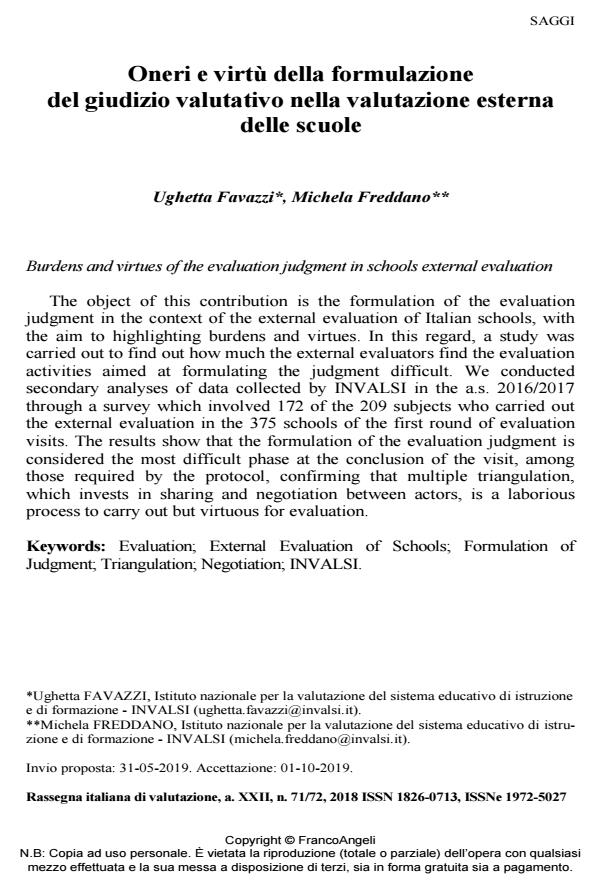Burdens and virtues of the evaluation judgment in schools external evaluation
Journal title RIV Rassegna Italiana di Valutazione
Author/s Ughetta Favazzi, Michela Freddano
Publishing Year 2019 Issue 2018/71-72
Language Italian Pages 23 P. 235-257 File size 531 KB
DOI 10.3280/RIV2018-071012
DOI is like a bar code for intellectual property: to have more infomation
click here
Below, you can see the article first page
If you want to buy this article in PDF format, you can do it, following the instructions to buy download credits

FrancoAngeli is member of Publishers International Linking Association, Inc (PILA), a not-for-profit association which run the CrossRef service enabling links to and from online scholarly content.
The object of this contribution is the formulation of the evaluation judgment in the context of the external evaluation of Italian schools, with the aim to highlighting burdens and virtues. In this regard, a study was carried out to find out how much the external evaluators find the evaluation activities aimed at formulating the judgment difficult. We conducted secondary analyses of data collected by INVALSI in the a.s. 2016/2017 through a survey which involved 172 of the 209 subjects who carried out the external evaluation in the 375 schools of the first round of evaluation visits. The results show that the formulation of the evaluation judgment is considered the most difficult phase at the conclusion of the visit, among those required by the protocol, confirming that multiple triangulation, which invests in sharing and negotiation between actors, is a laborious process to carry out but virtuous for evaluation.
Keywords: Evaluation; External Evaluation of Schools; Formulation of Judgment; Triangulation; Negotiation; INVALSI
- Oneri e virtù della formulazione del giudizio valutativo nella valutazione esterna delle scuole Ughetta Favazzi, Michela Freddano, in RIV Rassegna Italiana di Valutazione 71/2019 pp.235
DOI: 10.3280/RIV2018-071012
Ughetta Favazzi, Michela Freddano, Oneri e virtù della formulazione del giudizio valutativo nella valutazione esterna delle scuole in "RIV Rassegna Italiana di Valutazione" 71-72/2018, pp 235-257, DOI: 10.3280/RIV2018-071012